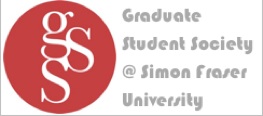

Overview
The SFU-UBC Joint Graduate Student
Workshop in Statistics is going into its 12nd year. This is the first
of two
seminars to take place this school year; the one in Fall is organized
by graduate
students
from SFU and the one in Spring is organized by graduate students from
UBC. The idea of this event is to offer
graduate students in Statistics and Actuarial Science with an
opportunity to attend a seminar with accessible talks providing them an
introduction to active areas of research in the field. For two
students from each university the seminar allows them to present on
their work, as well as to offer them an opportunity
to develop their presentation skills with their peers.
A new format this year consists
of talks given by four students (two from UBC and two from SFU) and
one
professor (from SFU in the Fall and UBC in the spring). This change is being done
to expand the networking aspect of the event, in order to allow students more time to
meet their peers from the other institution. There will be time dedicated to an ice
breaker event and a social trivia game with prizes at the end of the event.
The seminar also contains the traditional important social components, namely
the morning coffee and the lunch where students get more opportunity to network
with each other and foster a mutually beneficial relationship between the departments.
Information on previous seminars can be
found on the UBC statistics department website (here).
Sponsorship
This seminar could not take place
without the generous help of our
sponsors: The Pacific Institute for the Mathematical Sciences (PIMS)
and the Department of Statisctis and Actuarial Science at Simon Fraser University (StatSFU).